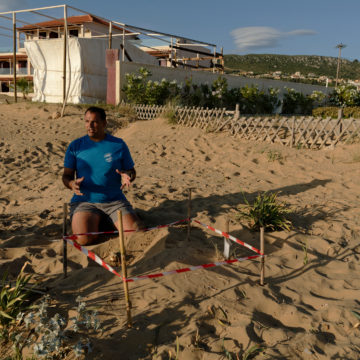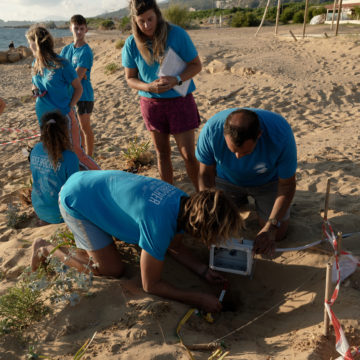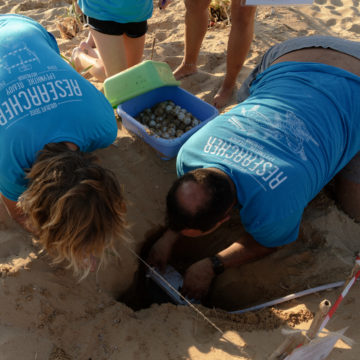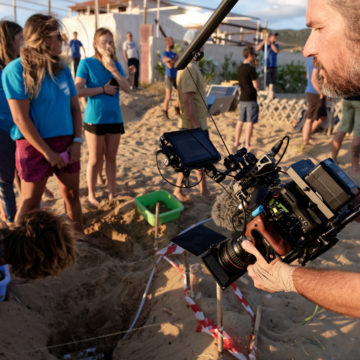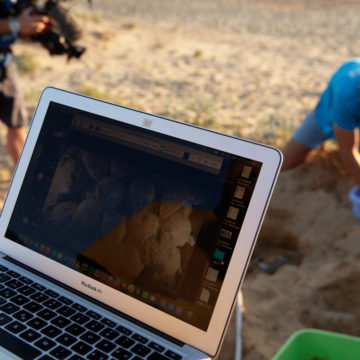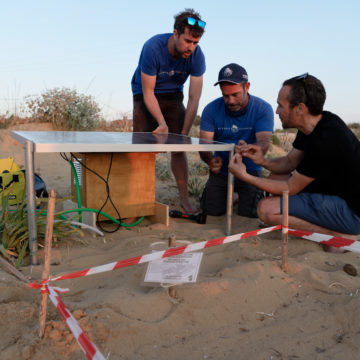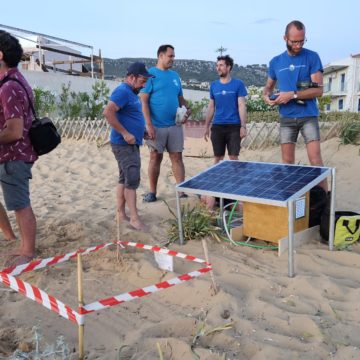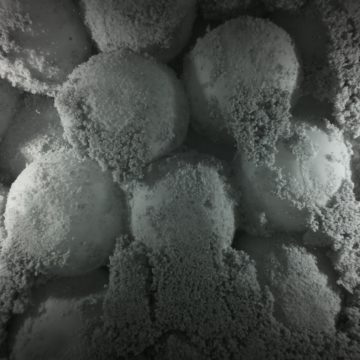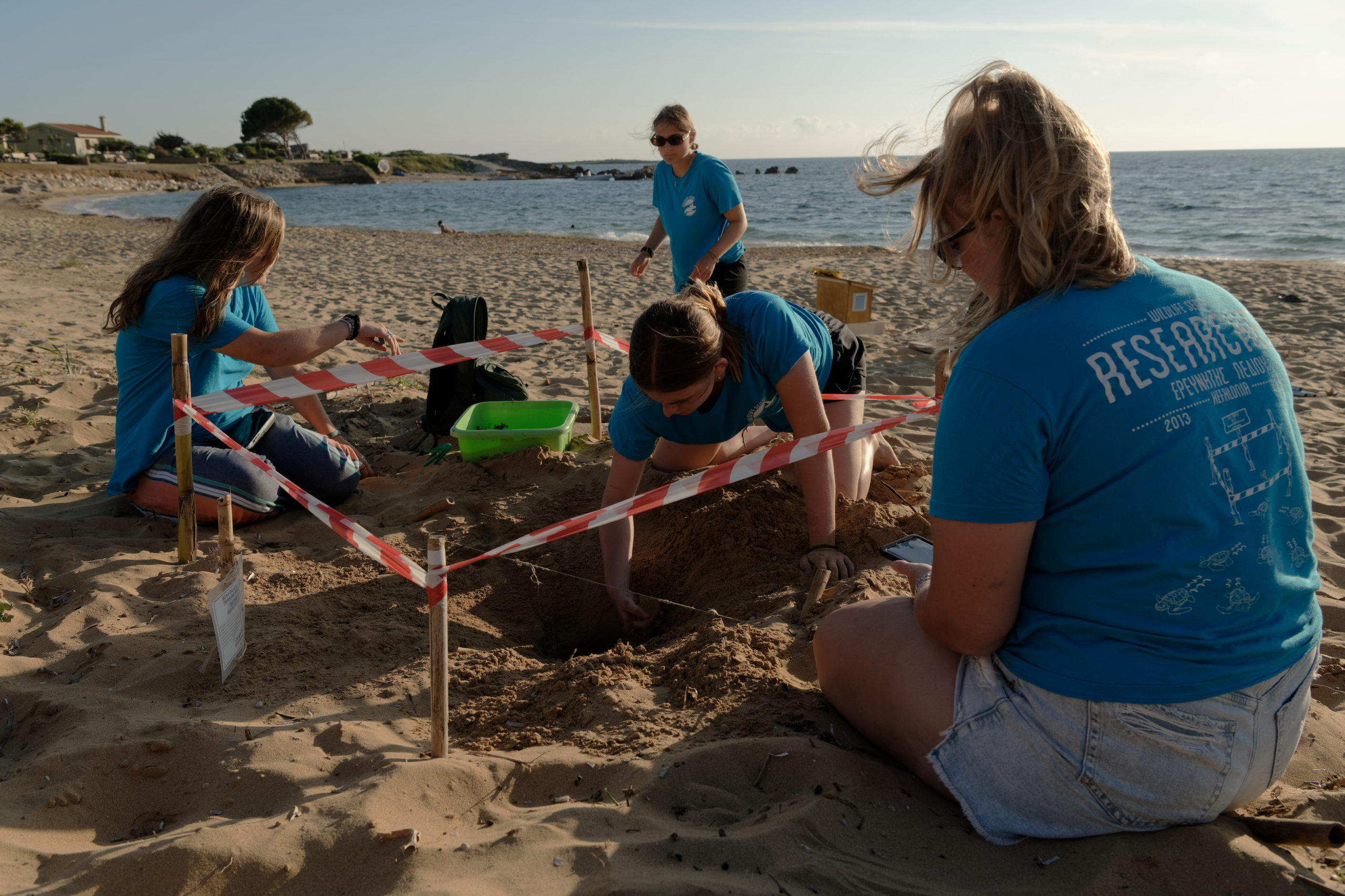
A window on the birth of sea turtles
The survival of marine turtles is a constant struggle. It begins with their birth.
After decades spent effortlessly swimming in the open sea, an adult female turtle will climb out of her element for the very first time. With great difficulty, she will drag herself onto dry land to dig a hole in the sand of a beach, lay approximately one hundred eggs, and return to the safety of the water.
Heated by the summer sun, the sand acts as an incubator. And for hundreds of millions of years, sea turtles have perpetuated this ritual.
To ensure the survival of the greatest number of eggs, turtles meticulously choose sand of a certain quality so that the nest is warm, but not too warm; so that the environment is sufficiently humid, but not too humid.
Unfortunately, many external parameters can destroy these efforts: roots from dune plants, wild animals, tides, storms, dogs, tourists, fungus or even certain bacteria… they all represent mortal dangers for the eggs.
In certain regions of the world, to increase the chances of success, guardian angels have chosen to watch over them. On the island of Kefalonia in the Ionian Islands, volunteers from the Greek NGO Wildlife Sense are recognizable by their turquoise blue T-shirts. Every night throughout the nesting period, dozens of volunteers walk the region’s beaches.
So many questions
Each time a fresh nest is discovered, volunteers check the precise location where the eggs were laid, measure the dimensions and depth of the nest, then cover it back and protect the spot with red tape. The waiting then begins. On average, it takes 55 days for the little turtles to finally dig their way out of the sand.
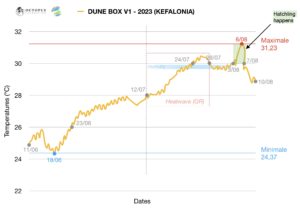 Between the laying and the hatching of the eggs, the mystery is almost total. How do temperature and humidity vary between days and nights? Are there any real variations, knowing that the average temperature decides whether the little turtles are females (over 29°C) or males (under 29°C)? When it’s time to hatch, how do they manage to dig themselves out, knowing that a small turtle alone does not have the strength to do so? In complete darkness, how do they know which way is up?
Between the laying and the hatching of the eggs, the mystery is almost total. How do temperature and humidity vary between days and nights? Are there any real variations, knowing that the average temperature decides whether the little turtles are females (over 29°C) or males (under 29°C)? When it’s time to hatch, how do they manage to dig themselves out, knowing that a small turtle alone does not have the strength to do so? In complete darkness, how do they know which way is up?
Many questions, and few answers. This is why, after long discussions with local biologists, we decided to create the “DuneBox”, a new non-invasive tool for remote monitoring turtle nests.
Open-source tools at the service of science
The system is relatively simple. We have taken the basis of the monitoring kit for monk seal caves that we have developed over the past five years. On the beach, a 100 Watt solar panel recharges a 12V battery so that the system is self-sufficient in energy. A small computer (Raspberry Pi) manages the electronic part of the system and records the data. Finally, a 3G-4G router connects the kit to the local telephone network so that it transmits the data to us over the course of 55 days.
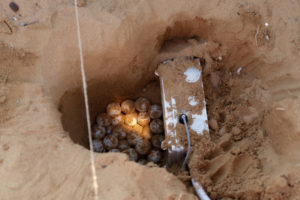 The big novelty is in the sand. Connected by a cable to the main beach box and buried 30-40 cm deep, a second waterproof box with a Plexiglass window protects a small camera and two infrared lights. Finally, a thermometer allows biologists to monitor the evolution of the temperature of the sand.
The big novelty is in the sand. Connected by a cable to the main beach box and buried 30-40 cm deep, a second waterproof box with a Plexiglass window protects a small camera and two infrared lights. Finally, a thermometer allows biologists to monitor the evolution of the temperature of the sand.
After several months of research and development, followed by field testings, the first DuneBox was deployed on June 11, 2023 on a beach in Kefalonia. The eggs, laid by a turtle a few hours earlier, were located too close to a group of dune plants whose roots risked threatening their survival. The biologists therefore decided to move the nest a few meters away to increase its chances.
In order to limit disturbances as much as possible, the camera, the infrared lighting and the temperature sensor are only turned on for one minute every six hours, or four times per 24 hours. The rest of the time, the entire system remains off.
A fascinating event
On August 4, 2023, 55 days after the laying, dozens of tiny turtles slowly hatched from the eggs, and for the first time, this process was fully captured in images by the DuneBox.
This data is currently being analyzed by Wildlife Sense biologists (Nikos Vallianos and Chanel Comis). We take the opportunity to thank them, because without their precious help and collaboration none of this would have been possible.

